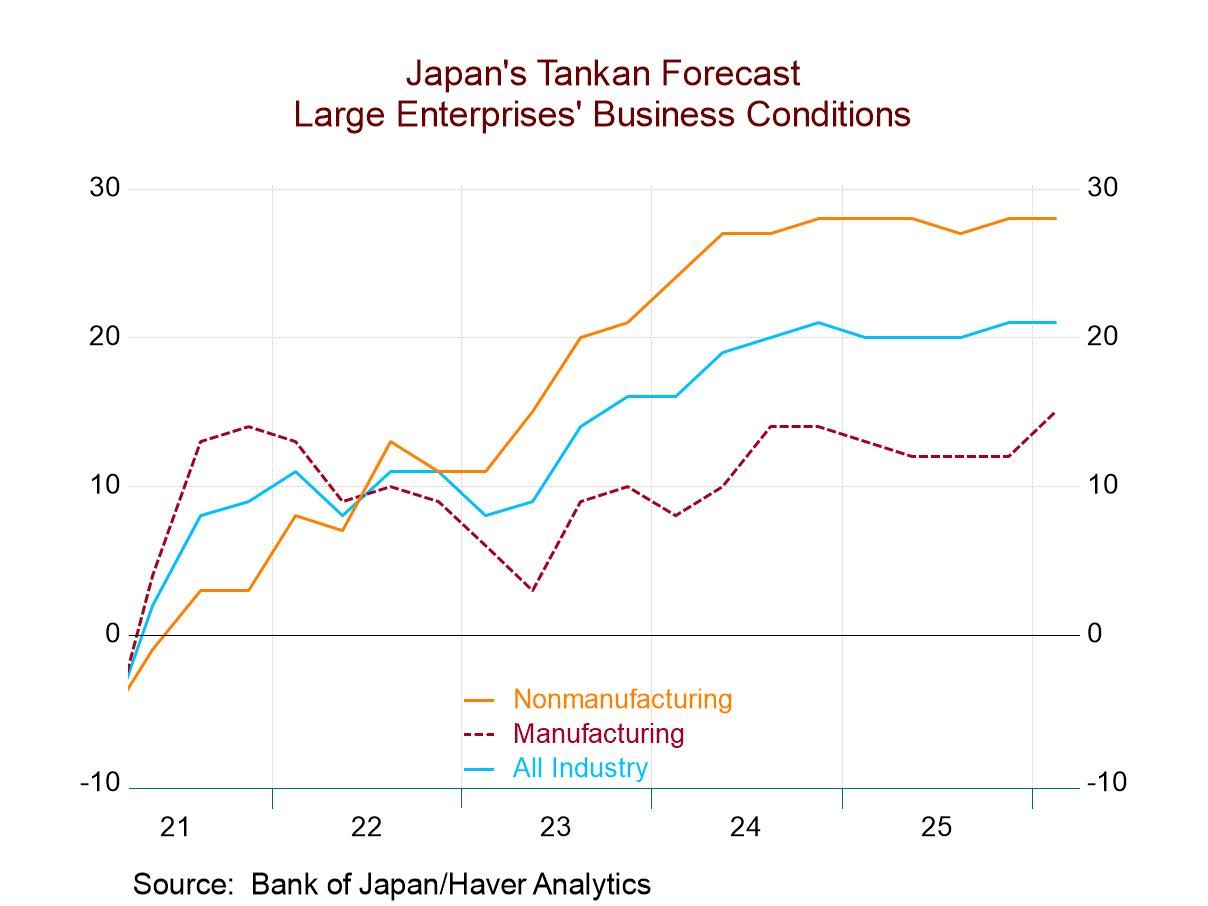U.S. Headline Consumer Price Inflation Slowed Further in March
by:Sandy Batten
|in:Economy in Brief
Summary
- Headline CPI increased a less-than-expected 0.1% m/m.
- Reflected a widespread decline in energy prices and no change in food prices for the first time since November 2020.
- Core CPI rose a more worrisome 0.4% m/m with the annual rate ticking up.


The Consumer Price Index edged up a less-than expected 0.1% m/m (5.0% y/y) in March following a 0.4% monthly gain in February. The 5.0% y/y rate was the lowest since May 2021 and well below the recent peak of 9.1% in June 2022. The Actions Economic Forecast Survey had expected a 0.3% monthly increase.
The index for shelter (+0.6% m/m) was by far the largest contributor to the monthly all items increase. Compared to a year ago, the shelter index is up 8.2%, its highest rate since June 1982. The March rise in the price of shelter more than offset a decline in the energy index, which decreased 3.5% m/m (-6.4% y/y) in March as all major energy component indexes declined. The food index was unchanged in March (+8.5% y/y).
The reading on the core index in March, however, was a little more worrisome. It rose 0.4% m/m, in line with expectations, with the y/y ticking up to 5.6% from 5.5% in February. The 8.2% y/y increase in the shelter index accounted for over 60% of the total increase in all items less food and energy. Component prices that increased in March included shelter (which contained a 2.7% m/m jump in prices of lodging away from home), motor vehicle insurance (1.2% m/m), airline fares (4.0% m/m), household furnishings and operations (0.4% m/m), and new vehicles (0.4% m/m). Prices of medical care (-0.5% m/m, the fifth monthly decline in the past six months) and the index for used cars and trucks (-0.9% m/m) were among those prices that decreased over the month.
Energy prices continued their general decline since last July. The 3.5% monthly decline reflected declines in each major category. Gasoline prices fell 4.6% m/m after having risen in both January and February while fuel oil prices declined 4.0%, their fourth consecutive monthly drop. Electricity prices fell 0.7% m/m, their first decline since February 2022. And natural gas prices plummeted 7.1% m/m following an 8.0% monthly plunge in February.
Food prices were unchanged in March, the first non-positive reading since November 2020. Prices of food consumed at home fell 0.3% m/m in March, their first monthly decline since September 2020. A 1.3% m/m decline in prices of fruits and vegetables and a 1.4% m/m decrease in prices of meats, poultry, fish, eggs led the overall decline. By contrast, prices of food consumed away from home rose 0.6% m/m, the same monthly increase as in January and February. The 8.8% y/y rate of advance was the fastest since August 1981.
The Consumer Price figures can be found in Haver's USECON database. The expectations figure is contained in the AS1REPNA database.


Sandy Batten
AuthorMore in Author Profile »Sandy Batten has more than 30 years of experience analyzing industrial economies and financial markets and a wide range of experience across the financial services sector, government, and academia. Before joining Haver Analytics, Sandy was a Vice President and Senior Economist at Citibank; Senior Credit Market Analyst at CDC Investment Management, Managing Director at Bear Stearns, and Executive Director at JPMorgan. In 2008, Sandy was named the most accurate US forecaster by the National Association for Business Economics. He is a member of the New York Forecasters Club, NABE, and the American Economic Association. Prior to his time in the financial services sector, Sandy was a Research Officer at the Federal Reserve Bank of St. Louis, Senior Staff Economist on the President’s Council of Economic Advisors, Deputy Assistant Secretary for Economic Policy at the US Treasury, and Economist at the International Monetary Fund. Sandy has taught economics at St. Louis University, Denison University, and Muskingun College. He has published numerous peer-reviewed articles in a wide range of academic publications. He has a B.A. in economics from the University of Richmond and a M.A. and Ph.D. in economics from The Ohio State University.






 Asia
Asia